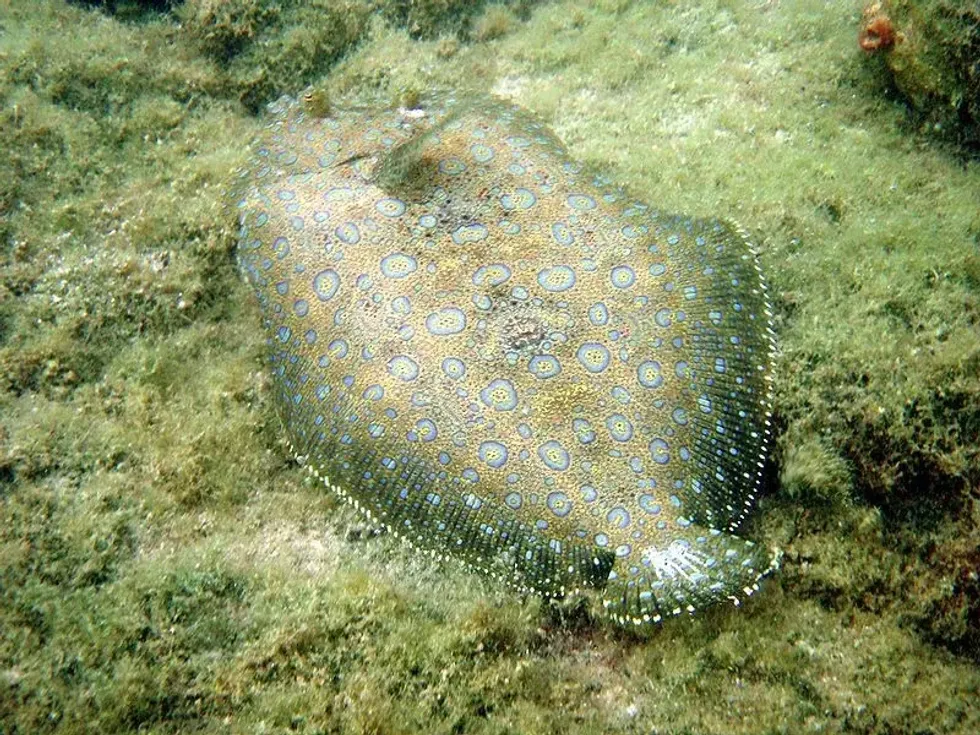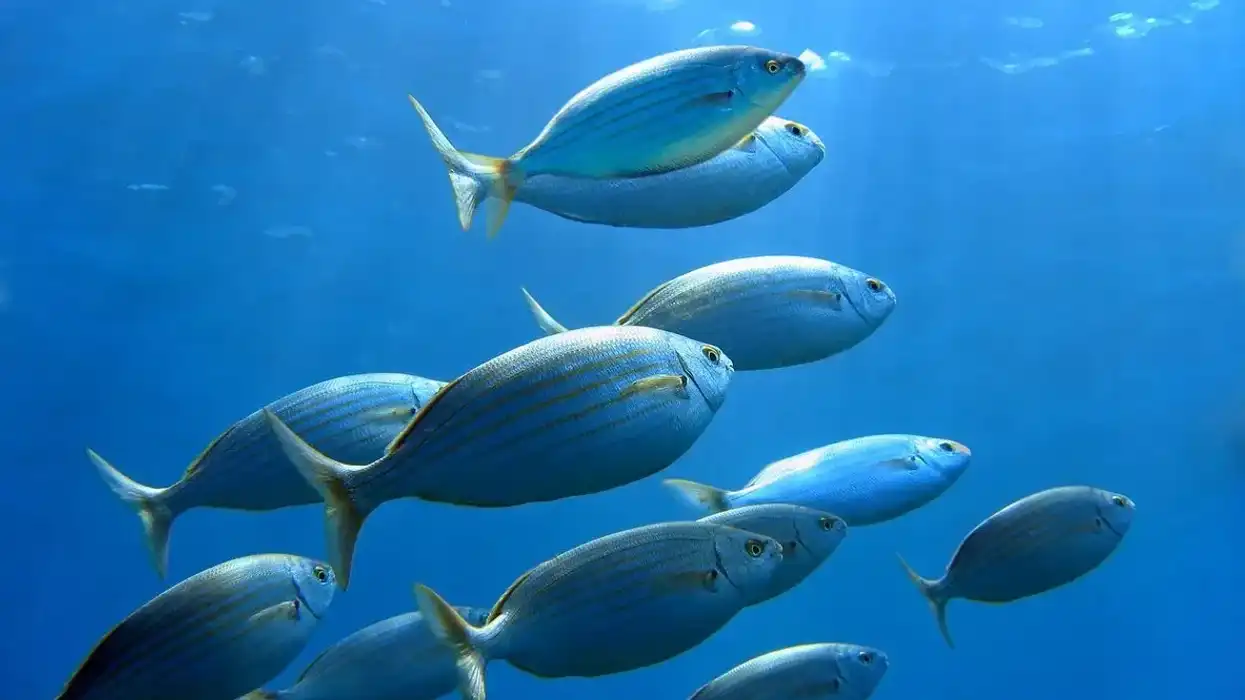The yellowtail flounder (Limanda ferruginea), also known as a witch flounder or flounder fillets, is one of the species of the fishes which belongs to the pleuronectidae family. This flatfish is found living on the sandy ocean bottom along the continental shelf.
They are reddish brown in color and are medium in size compared to the other species of fish. Their body is thin, with a small tail, and a small mouth with an arched lateral line.
In terms of biology, yellowtail flounder fishes grow faster as compared to the other flatfishes and can be known to live up to 17 years. Their body is oval in shape and is compressed laterally.
These yellowtails are also known as yellow sole or rusty dab and is a top choice for eating. The texture of the meat is firm, and the color is pinkish or snow white.
The Vulnerable status of this fish species is due to excessive yellowtail flounder fishing and has resulted in the imposition of catch limits in various regions along the coast. The stock is at 2% of the biomass target level.
Here are some interesting facts about the yellowtail flounder (Limanda ferruginea) for your perusal. Afterward, do check out our other articles on European flounder facts and peacock flounder facts.
Yellowtail Flounder Interesting Facts
What type of animal is a yellowtail flounder?
The yellowtail flounder is a type of fish that is oval in size and medium in size. They are reddish-brown in color and are also found in different parts of the world.
They tend to grow quickly as compared to other species of fishes. They are usually believed to be found in the depths of water where they prefer to live.
What class of animal does a yellowtail flounder belong to?
Yellowtail flounder (Limanda ferruginea) is a fish species of North America belongs to the class of ray-finned fishes in a family of rusty dab. Other species of flounders include olive flounder and summer flounder.
How many yellowtail flounders are there in the world?
There is an estimate that there are approximately 30 million yellowtail flounders that are there in the world. The number of yellowtail flounders changes according to the different factors which are responsible to determine the increase and decline in the number of yellowtail flounders.
Sometimes, the number of yellowtail flounders is said to be high whereas sometimes it is less.
Where does a yellowtail flounder live?
Yellowtail flounders prefer to live in the sandy bottoms which are along the continental shelf from southern Labrador to the Chesapeake Bay. They are said to be found in different regions. They are known as oval-shaped dwellers and they also live in water that is deep in height.
What is a yellowtail flounder's habitat?
A yellowtail flounder’s habitat includes the sandy bottoms which are along the continental shelf and are found from southern Labrador to the Chesapeake Bay. They prefer to live in different parts of the world according to the suitability of their body.
Who do yellowtail flounders live with?
Yellowtail flounders usually prefer to live alone rather than living in groups or with their partners. These fishes come together during their mating season and also during the time of their mating season. Therefore, other than that yellowtail flounders prefer to live alone rather than living in groups.
How long does a yellowtail flounder live?
Yellowtail flounders live for up to 17 years. The lifespan of yellowtail flounders depends on various factors which determine the life of yellowtail flounders. Some of the yellowtail flounders live for a longer period of time whereas some of the yellowtail flounders live for a short period of time depending on certain factors.
How do they reproduce?
Females attain sexual maturity at the age of three years. The spawning season of yellowtail flounders takes place during spring and summer. The female yellowtail flounders deposit their eggs on the ocean floor, and once the eggs get fertilized, they then float to the surface, and then the larvae drift in the surface waters for about two months.
What is their conservation status?
The conservation status of yellowtail flounders is Vulnerable as per IUCN. The reason behind this status is overfishing across the range of habitat of this flatfish. The stock is at 2 % of the biomass target level.
Yellowtail Flounder Fun Facts
What do yellowtail flounders look like?
Yellowtail flounders are fishes that have thin bodies and are right-eyed, which varies in fish sizes. They are wide and long as they have an oval body and a small dorsal fin with a tiny tail.
The mouth of the yellowtail flounder is small and has an arched lateral line. There are rusty red spots present all over the body. These fishes have a long dorsal fin extending from the head to caudal fin.

*Please note that this is an image of a flounder, not a yellowtail flounder. If you have an image of a yellowtail flounder, please let us know at hello@kidadl.com.
How cute are they?
Yellowtail flounders are cute in their appearance as they are medium in size and look adorable in their appearance. Their yellow-colored tail shines out differently than other flounders.
How do they communicate?
Yellowtail flounders communicate with the help of gesture and motion as well. Yellowtail flounders also use electrical pulses such as signals in order to communicate with each other. This flatfish also releases chemicals that can be sensed either by smell or taste.
How big is a yellowtail flounder?
Yellowtail flounders are medium in size as compared to the other species of fish. Yellowtail flounders grow up to 28 in (55 cm) in size.
How fast can a yellowtail flounder move?
There is no accurate speed so as to how fast a yellowtail flounder can move. Yellowtail flounders are found in the depths of the water and tend to move faster when they see the predator approaching them. Therefore, the speed of the yellowtail flounder is not mentioned.
How much does a yellowtail flounder weigh?
Yellowtail flounders weigh very less in weight. They weigh around 2.2 lb (1 kg) according to their body structure. The weight of yellowtail flounders depends on their eating habits as well.
What are the male and female names of the species?
There is no accurate or specific name so as to what males and females in yellowtail flounders are called. The males are called male yellowtail flounders and females are known as female yellowtail flounders.
What would you call a baby yellowtail flounder?
There is no accurate or specific name so as to what a yellowtail flounder is called. They are known as juveniles and also as yellowtail flounders.
What do they eat?
The juvenile yellowtail flounders mostly feed on worms whereas the adult yellowtail flounders diet consists of crustaceans and worms. They generally like to eat anchovies, shrimps, insects, worms, and crabs.
Are they poisonous?
No, yellowtail flounders are not poisonous. It contains mercury which may harm pregnant women if taken in high doses.
Would they make a good pet?
Yes, yellowtail flounders make good pets as they do not harm human beings. They can be kept as pets in aquariums but the pet owner should take care that the fish is provided with the required food which is a part of their diet. Therefore, they can be kept in aquariums as pets.
Did you know...
Yellowtail flounder fishes are also eaten by people in their diet. Yellowtail flounders are known to be diurnal species which means they only eat during the day. Yellowtail flounders have small teeth and live in the water between 130-230 ft (39.6-70.1 m). Yellowtail flounders are widely known because of its lean meat, delicate flavor, and also fine texture.
Yellowtail flounder is an ambush predator. It lies motionless on the ocean or sea floor, blending in with the environmental surroundings and when the prey passes by it leaps at the prey in a flash.
Is a fluke and a flounder the same fish?
Yes, fluke and flounder are the same fish. Fluke is flounder. Fluke is another name for summer flounder. Therefore, Flukes and Flounders are one and the same. The left-side up flounders are flukes and the right-side-up flounders are called flounders. When it comes to yellowtail flounder vs winter flounder groundfish species, there are some differences.
What is unusual about a flounder?
The yellowtail flounder are known to be morpho genetically unusual. Juveniles are bilaterally symmetrical with an eye on each side. After a few days, it begins to lean to one side, and the eye on that side then migrates to the top side of the fish.
Here at Kidadl, we have carefully created lots of interesting family-friendly animal facts for everyone to discover! For more relatable content, check out these winter flounder facts and yellowfin tuna facts pages.
You can even occupy yourself at home by coloring in one of our free printable yellowtail flounder coloring pages.
*Please note that the main image is of a flounder, not a yellowtail flounder. If you have an image of an yellowtail flounder, please let us know at hello@kidadl.com.










